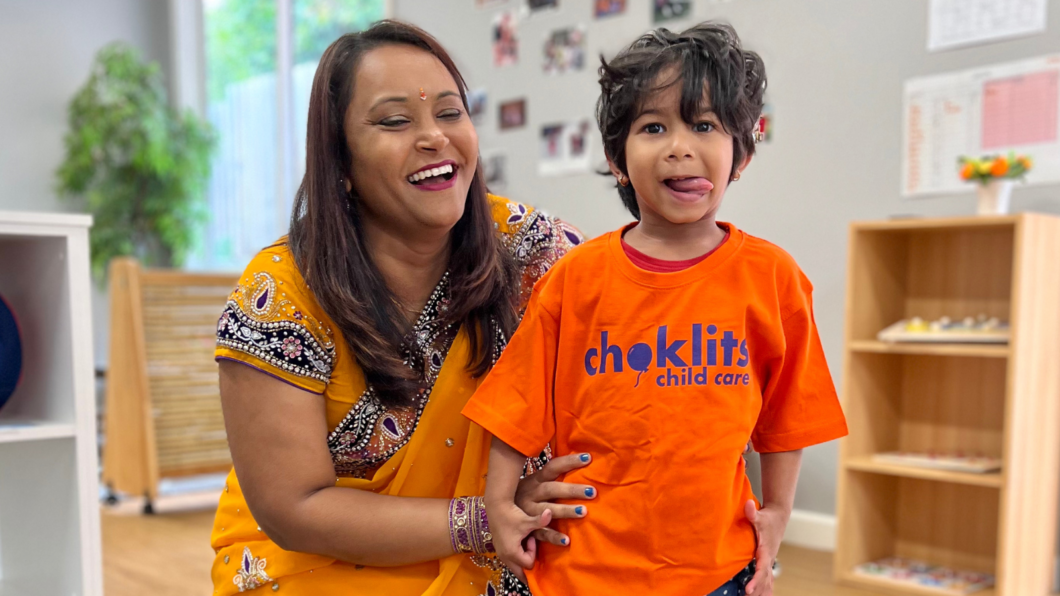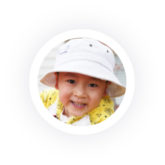Celebrating Holi Festival of Colours for Children Under 5
We celebrate many different days throughout the year at Choklits as they are such great learning opportunities for all our children. One of our favourites is the Holi Festival of Colours.
Holi is a Hindu festival that is celebrated all over India and other parts of the world. It is also known as the Festival of Colors because often people throw coloured powder and water on each other as a sign of love, friendship and unity. The festival is usually celebrated in March and it is a fun and exciting event for both children and adults which can even include dressing up!
Kriti (above) is presenting the kindergarten children with their very own (and famous) Choklits Kindergarten t-shirts during our ongoing celebrations of cultural diversity.
Children under 5 years of age can also participate in the celebration of Holi in many ways. In this blog post, we will explore some ways that children can celebrate Holi and how it links to the Early Years Learning Framework.
1. Playing with Colours: Experimenting with colours is the main highlight of Holi. Children can use safe and non-toxic colours to play with. Educators and parents can also make organic colours at home using turmeric, beetroot, spinach, and other natural ingredients. This activity can help children to develop their sensory skills, hand-eye coordination and creativity. It also helps them to explore and understand different colours and their properties, which aligns with the Early Years Learning Framework’s outcome of “Children develop a range of skills and processes such as problem-solving, inquiry, experimentation, hypothesising, researching and investigating”.
2. Storytelling: Holi is a cultural festival and it is important to educate children about its significance and history. Parents and educators can tell stories about the festival’s origins and traditions. They can also read books related to the festival or watch videos to understand the different aspects of Holi. These opportunities for storytelling can help children to develop their language and communication skills, as well as social and emotional skills. Their engagement with stories about Holi also helps children to develop cultural competence, which aligns with the Early Years Learning Framework’s outcome of “Children develop a sense of belonging to groups and communities and an understanding of the reciprocal rights and responsibilities necessary for active community participation”.
3. Dancing: Dancing is an essential part of Holi celebrations. Children can dance to traditional Holi songs with their parents or other family members. Dancing is a fun way to develop gross motor skills, coordination, and creativity. It also helps children to express themselves and their emotions, which aligns with the Early Years Learning Framework’s outcome of “Children become strong in their social, emotional and spiritual wellbeing”.
4. Cooking and Eating: Holi is also a festival of food, and there are many traditional dishes that are prepared during this time. Children can help their parents in the kitchen to make Holi sweets and snacks such as gujiya, thandai, and mathri. Cooking with educators and parents can help children to develop their life skills, including following directions, measuring ingredients, and cooking methods. They can also learn about different types of food and nutrition, which aligns with the Early Years Learning Framework’s outcome of “Children develop a range of skills and processes such as problem-solving, inquiry, experimentation, hypothesising, researching and investigating”.
5. Craft Activities: Craft activities are a fun way for children to create their own decorations and props for Holi. They can make paper flowers, colour the traditional Holi masks, and create Rangolis (beautiful chalk drawings that represent happiness and positivity). This activity can help children to develop their creativity, fine motor skills, and cultural competence. It also helps them to understand the significance of Holi decorations and symbols, which aligns with the Early Years Learning Framework’s outcome of “Children develop an understanding that symbols are a powerful means of communication and that ideas, thoughts and concepts can be represented through them”.
In conclusion, Holi is a fun and exciting festival that can be celebrated by children under 5 years of age in many ways. Educators can use this festival to engage with their children and teach them about different cultural traditions and practices. These activities align with the Early Years Learning Framework and can help children to develop their cognitive, language, social, and emotional skills. You can see why, for all the reasons above, Holi is a great opportunity for the children to engage with learning about the world around them through a range of experiences.



